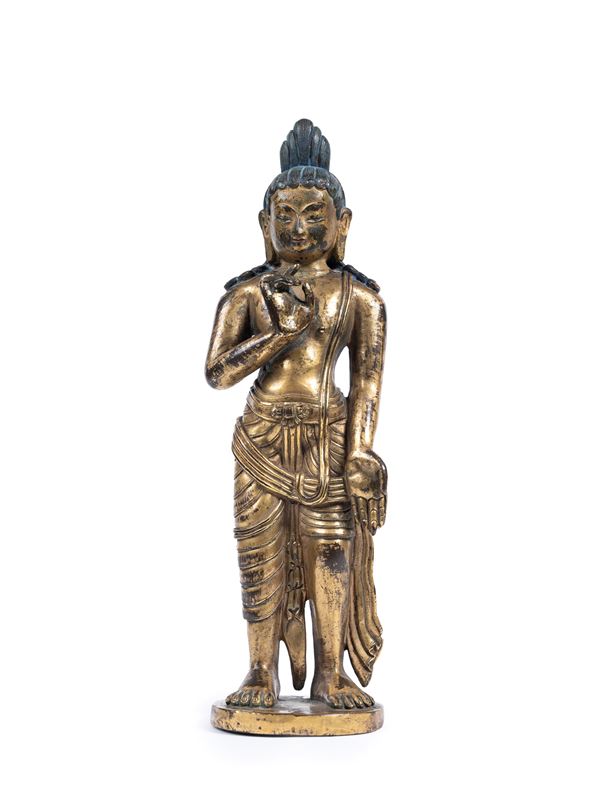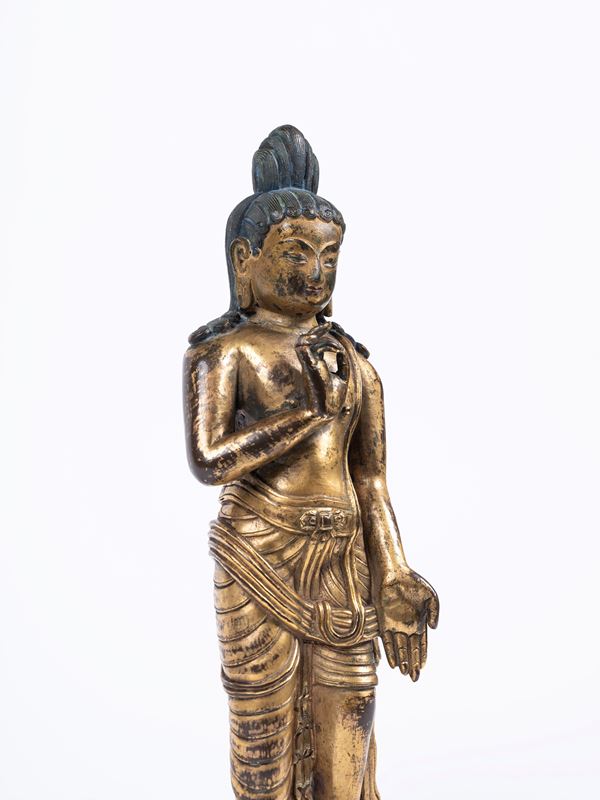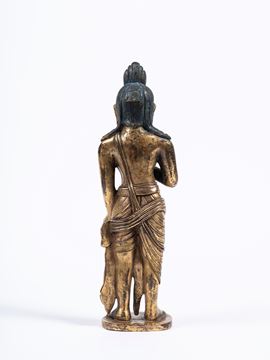A RARE GILT-BRONZE FIGURE OF AVALOKITESVARA, China / Tibet, 17th / 18th century
Possibly depicting the bodhisattva Avalokitesvara in a standing position, with the right hand in kataka mudra and the left lowered in varada mudra. He wears a draped garment cinched at the waist with a belt, leaving the chest uncovered. His long curly hair is tied up and falls gracefully over his shoulders.
Provenance: from the Ullman collection, Italy.
Exhibitions: Le montagne Sacre, Antica Arte del Tibet, 12 February - 20 March 1994, Modena, Palazzo Comunale.
Literature: Lo Bue F. Erberto 1994, Le Montagne Sacre, Antica Arte del Tibet, Modena, pag. 11 n. 4.
Catalog notes:
The figure is not easily identifiable (the absence of jewelry suggests a resemblance to a Buddha) however, it is clearly influenced by Tibetan art, evident in the facial expression, hair, and posture. This can be compared to a 10th/11th-century Nepalese figure of Vajrapani from the Qing court collection, preserved in the Palace Museum in Beijing, and illustrated in Palace Museum 2007, The Complete Collection of Treasure of the Palace Museum: Buddhist Statue of Tibet, Shanghai, p. 77, no. 74.
On the present lot, XRF analyses have been performed in three points, respectively on the base, on the right elbow and on the head on the blue pigments. The chemical analyses reported in this catalog were conducted using an Olympus XRF analyzer, model VCR-CCC-A3 (SN: 823330), equipped with a 40 kV Rhodium tube. Measurements were carried out with an acquisition time of 30 seconds per sample and an analysis radius of 2 millimeters.
Please note that the element labeled as W (Tungsten) in the results should be interpreted as Au (Gold). The results are expressed as percentages (%) for elements present in larger quantities and in parts per million (PPM) for those present in trace amounts. It is worth noting that 1 PPM corresponds to 0.0001%.
To view the PDF analysis report, please refer to the following link: XRF chemical analysis
铜鎏金观音像,汉/藏,十七/十八世纪












